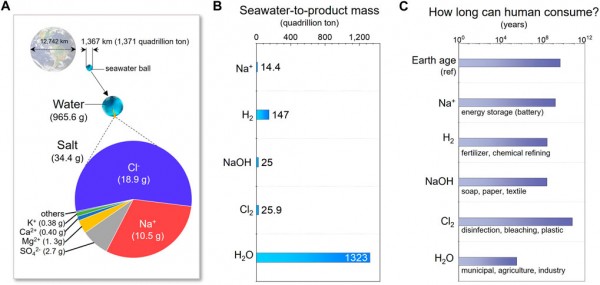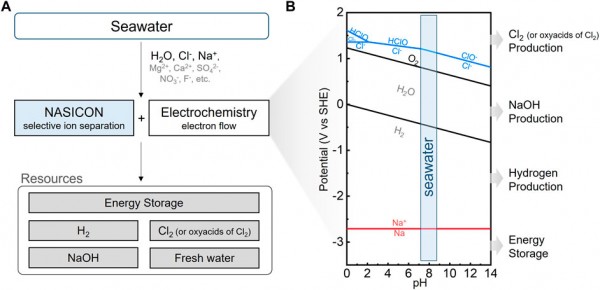Seawater to resource technologies with NASICON solid electrolyte: a review
- Journal
- Frontiers in Batteries and Electrochemistry
- Year
- 2023
Seawater represents an inexhaustible reservoir of valuable resources, containing
vast quantities of both water and minerals. However, the presence of various
impurities in seawater hinders its direct utilization for resource extraction. To
address this challenge, an electrochemical method employing a solid electrolyte
known as NASICON (Sodium Super Ionic Conductor) offers effective solutions for
extracting valuable resources from seawater. The NASICON ceramic acts as a
robust barrier against impurities and facilitates the selective transport of Na+. This
review provides a comprehensive examination of NASICON ceramics, offering an
overview of the concept and highlighting the competitive advantages of
NASICON-based electrochemical systems, particularly in the realms of energy
storage, hydrogen production, sodium hydroxide and chlorine synthesis, water
treatment, and mineral extraction. Furthermore, this study outlines the key
challenges that need to be addressed and discusses the trajectory of its
development toward becoming a mature technology.
vast quantities of both water and minerals. However, the presence of various
impurities in seawater hinders its direct utilization for resource extraction. To
address this challenge, an electrochemical method employing a solid electrolyte
known as NASICON (Sodium Super Ionic Conductor) offers effective solutions for
extracting valuable resources from seawater. The NASICON ceramic acts as a
robust barrier against impurities and facilitates the selective transport of Na+. This
review provides a comprehensive examination of NASICON ceramics, offering an
overview of the concept and highlighting the competitive advantages of
NASICON-based electrochemical systems, particularly in the realms of energy
storage, hydrogen production, sodium hydroxide and chlorine synthesis, water
treatment, and mineral extraction. Furthermore, this study outlines the key
challenges that need to be addressed and discusses the trajectory of its
development toward becoming a mature technology.


